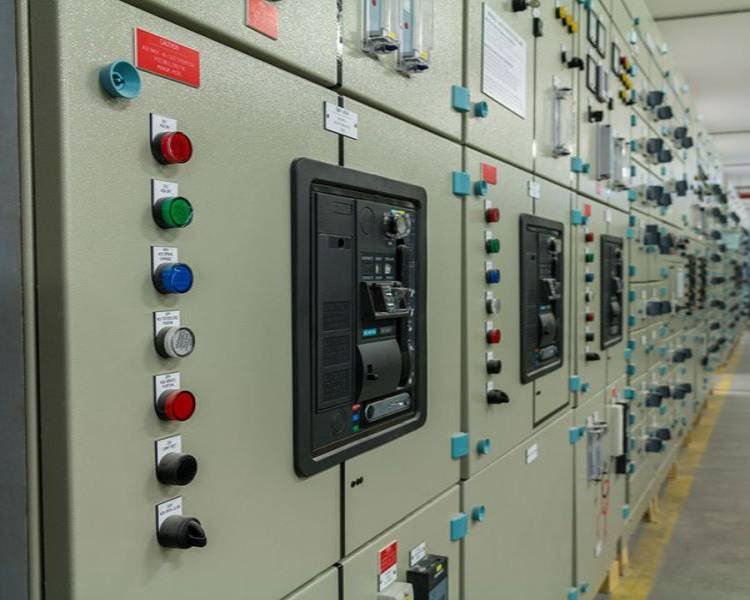A low-voltage electrical panel, often referred to as a distribution board, electrical control panel, or electrical distribution cabinet, is a critical component in electrical systems. It is designed to distribute electrical power from the main electrical supply to various circuits and devices within a building, industrial facility, or any location that requires electrical power. Here are some key points to understand about low & medium voltage electrical panels:
Voltage Rating: Low & high voltage panels typically operate at voltage levels below 600 volts AC (alternating current). Common voltages include 120V, 208V, 240V, and 480V, depending on the specific application.
Main Power Input: The main electrical supply from the utility or generator is connected to the electrical panel through a main circuit breaker or disconnect switch. This component allows for the safe isolation of power to the entire panel.
Circuit Breakers: Inside the panel, there are multiple circuit breakers or fuses. These devices protect individual circuits from overloads and short circuits. Each circuit breaker is associated with a specific load or group of loads (e.g., lighting, outlets, HVAC systems).
Bus Bars: The panel includes bus bars, which are conductive bars or strips that distribute electrical power from the main input to the individual circuit breakers. Bus bars are usually made of copper or aluminum.
Branch Circuits: The electrical panel divides the incoming power into branch circuits. These circuits serve various areas or appliances in the building. Each branch circuit has its own circuit breaker or fuse for protection.
Safety Features: Electrical panels are equipped with safety features, including grounding and bonding to prevent electrical shocks, and enclosure doors to protect against accidental contact.
Labeling: Proper labeling of circuit breakers or fuses is essential for easy identification of circuits. This helps during troubleshooting and maintenance.
Monitoring and Control: In more advanced electrical panels, you may find additional components for monitoring and control, such as digital meters, timers, relays, and programmable logic controllers (PLCs).
Compliance: Electrical panels must comply with local electrical codes and standards, which vary depending on the location and type of installation.
Maintenance: Regular maintenance and inspection of the electrical panel are crucial to ensure safety and reliability. This includes tightening connections, checking for signs of wear or damage, and verifying that all components are functioning correctly.
Low & medium voltage electrical panels are essential for managing and controlling electrical power distribution in buildings and industrial facilities. They play a critical role in ensuring the safety of occupants and the reliable operation of electrical systems. It's important to hire qualified electricians or technicians to install, maintain, and repair electrical panels to ensure compliance with safety standards and regulations.

